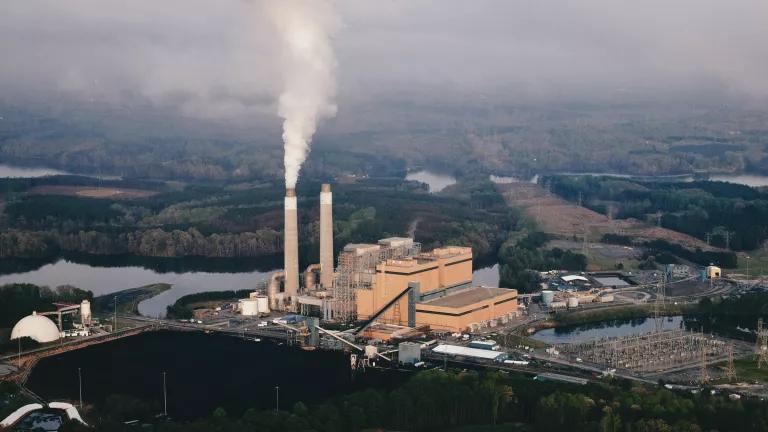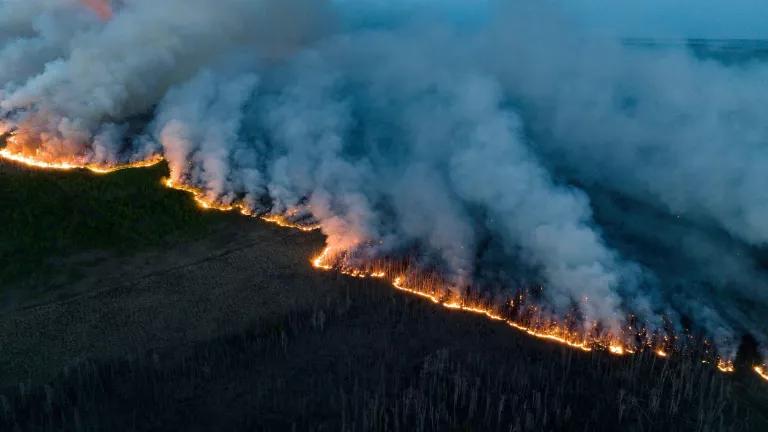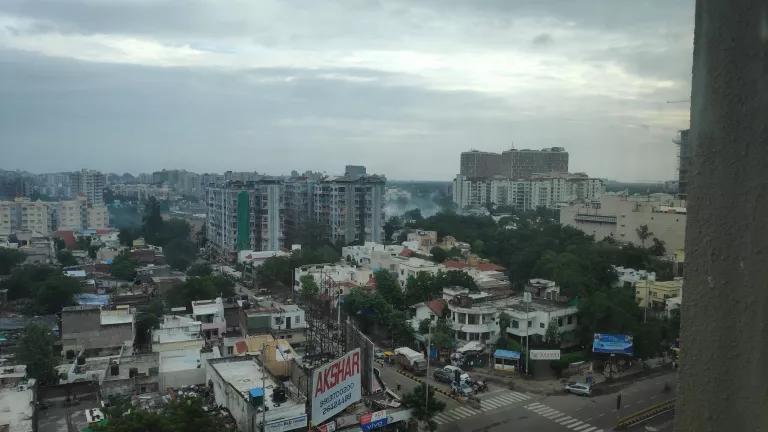EPA Halts Efforts to Clean Up Unsafe Levels of Ozone Smog

In defiance of science and the law, EPA attempts to halt fifty years of progress delivered by the Clean Air Act.
UPDATE: On February 11, 2021, 14 health and environmental groups, including NRDC, sued the U.S. Environmental Protection Agency for ignoring the science that clearly calls for more protective ozone standards. With its December 2020 decision under then-president Trump, the agency decided to leave dangerously inadequate National Ambient Air Quality Standards for ozone in place—and failed to meet its legal requirement to protect public health.
On December 23, 2020, the U.S. Environmental Protection Agency delivered an early Christmas gift to polluters, leaving the federal limit for ozone pollution at its current—inadequate, unsafe—level and putting the health of tens of millions of people at risk.
Last year marked 50 years since the Clean Air Act, a major achievement for public health, was signed into law. That law has delivered enormous public health benefits and could do even more to protect the 120 million people around the country who still breathe unsafe air. President Trump’s EPA, under Administrator Andrew Wheeler, could have left office with strong clean air standards that aimed to protect us all amidst a respiratory pandemic. Instead, anti-science, pro-polluter interests operating at the highest levels of the Environmental Protection Agency showed their determination to take us backwards, even in the waning days of the Trump administration’s time in office. Determined to solidify their reckless pro-polluter agenda, EPA rushed through a decision to let unhealthy levels of ozone air pollution linger from coast to coast.
Even worse, EPA Administrator Andrew Wheeler has paired his decision to hit pause on the Clean Air Act’s limits on ozone smog air pollution with a similar decision to do nothing to strengthen standards on fine particulate matter (soot) pollution. In doing so, Wheeler seeks to allow two types of dangerous levels of air pollution to linger around the country—even as a deadly virus that attacks the lungs continues to challenge our country and harm the most vulnerable in our communities.
A Rush to Deliver Dirty Air to Polluters
Almost as appalling as the standards themselves is the sham process Wheeler’s EPA has followed to attempt to lock in these standards before the lights go out on this Administration. EPA cut unprecedented corners in its race to finalize this rule during a historic respiratory disease pandemic. Wheeler put EPA’s smog rule on a fast-track, with only 45 days allowed for public input. Nonetheless, NRDC led a group of coalition partners to push back hard on the dangerous proposal, submitting over 100 pages of extensive comments supported by numerous scientific studies showing that EPA’s proposal was out of step with the law and the science and must be withdrawn. In a familiar pattern, Wheeler ignored the science and the law, and finalized a do-nothing standard that will leave us with dirty air for years to come. And in a last-minute effort to cement its pro-polluter legacy, the Agency rushed through the interagency review process and signed a rule that flouts norms of administrative law.
Health Dangers and Costs of Ozone Smog
Ozone smog air pollution is a public health menace. It’s not spewed directly from a tailpipe or a smokestack, but rather forms in the atmosphere through the mixing of other air pollutant “building blocks.” Those building blocks include nitrogen oxides, which are produced when cars, power plants, and other industrial sources burn fossil fuels. Other sources, like wildfire smoke, also contribute to ozone pollution. The science is clear that the chemical recipe that triggers the formation ozone pollution speeds up in warmer conditions, which is why we typically see dangerous spikes in ozone air pollution (and ozone alert days) in the summertime.
Years of public health evidence show that breathing in ozone is damaging to our bodies. Short-term exposure to ozone is linked to many health problems including heart disease, reduced lung function, lung inflammation and susceptibility to infection, asthma exacerbation, and premature death from heart and lung diseases. It’s even been shown to worsen metabolic diseases like diabetes.
Ozone is dangerous to all, but particularly harmful to vulnerable groups like children, older people, those with asthma and other pre-existing lung and heart conditions, and outdoor workers. Moreover, communities of color and low income communities are disproportionately burdened by higher ambient pollution levels. Importantly, these health risks have been confirmed at levels well below the current Clean Air Act’s standard—which is why EPA should strengthen the national limits to no higher than 60 parts per billion. There are currently no national long-term limits on ozone, even though scientific evidence continues to show health problems caused from years-long exposure to this type of pollution.
In addition to the human suffering linked to ozone air pollution, it’s also an expensive health problem For example, NRDC’s analysis of ozone-related health problems in Nevada during just one year estimated nearly $900 million in health-related costs related to 97 deaths, 114 hospitalizations, and 194 trips to the emergency room from ozone exposure.
Worrying Trends
Unfortunately, our national ozone problem is poised to go from bad to worse. EPA estimates that right now, huge swaths of the country suffer from ozone levels that exceed legal limits—more than 120 million (1 in 3) Americans, by its estimate, breathe unhealthy air. With the climate crisis triggering searing, historic heat waves in recent years, ozone levels remain stubbornly high in some areas after years of decline. The American Lung Association’s annual analysis of air quality data shows that climate change is already contributing to ozone problems in places like California. Unfortunately, unprecedented wildfires, also worsened by climate change, are also driving increases in ozone and fine particle air pollution across the American West, as toxic smoke spreads hundreds of miles downwind from the flames.
EPA’s Reckless, Do-Nothing Rule
EPA chose to cement its polluter-friendly legacy by defying the law and the science on ozone and public health through this rule. The final rule allows for dangerous levels of ozone pollution to persist across the country, and is a dangerous attack on public health for many reasons:
- EPA failed to protect human health with an adequate margin of safety, as is required by the Clean Air Act
- EPA followed a rushed, flawed, and biased science review process that ignored the impacts of ozone on vulnerable populations and harms from long-term exposures
- EPA distorted and manipulated the scientific evidence base on ozone and human health, and data that demonstrate significant harms to Americans at currently permissible levels of ozone
Simply put, EPA should have followed the law and the science instead of the toxic agenda of polluting industry, but it didn’t. The agency chose to deliver an 11th hour gift to polluters. The already severe health problems and healthcare costs caused by ozone air pollution are poised to grow in years to come, and EPA’s rule attempts to ensure just that outcome. National limits on dangerous ozone smog are outdated and should be strengthened, not stalled, so that we can all reap the benefits of cleaner air—longer and healthier lives, lower healthcare costs, and a more stable climate.
Fortunately, the incoming administration has signaled it will make restoring the EPA’s mission to protect people over polluters a top priority. Its time polluters stopped making us sick. The incoming administration should follow the science and the law and take action to ensure that clean air is a reality for all. Our lives depend on it.




